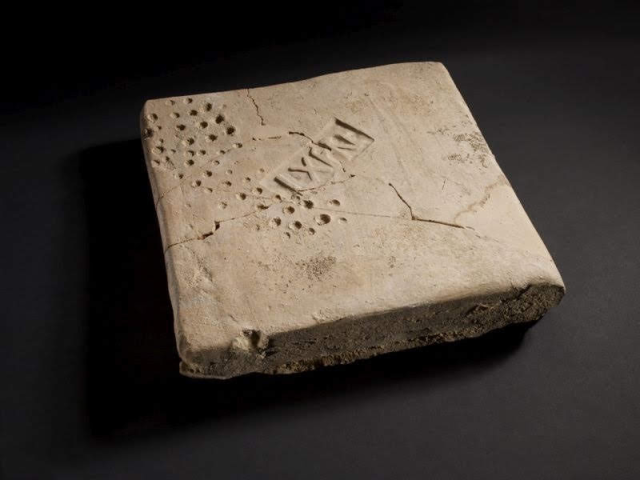Dozens of ancient paving tiles, bearing the seal impressions of the 10th Roman Legion, were found in a vehicle during an operational activity by the Jerusalem Police District detectives in the Arab Shuafat neighborhood in the eastern part of the city. The police detained the suspect and called the Antiquities Authority's Robbery Prevention Unit inspectors to the scene.
When the inspectors of the Antiquities Authority arrived at the police station, they were amazed to discover that the suspect had in his vehicle dozens of ancient bricks that are approximately 2,000 years old, from the Roman period, with seals and imprints of the 10th Legion on them. Evidence was found on the bricks that they were recently displaced from an antiquities site.
Police seize stolen bricks imprinted with 10th Roman Legion symbols: ‘They took a piece of history from us,’ bemoaned Israel Antiquities Authority JPost https://t.co/clFJEdMnBq pic.twitter.com/JS0WzhyVGh
— Jewish Community (@JComm_NewsFeeds) June 1, 2023
Amir Ganor, director of the robbery prevention unit at the Antiquities Authority, said: "The bricks were apparently used as part of the floor of a public building; they may have belonged to an oven that stood in a bathhouse and was used by the soldiers of the Roman legion. The 10th Roman Legion arrived in Israel in 6 BC and helped to fortify the control of the Roman kingdom in the land of Judah. Between the years 66-70 AD, the legion fought against the Jewish rebels in the Galilee, the Judean desert, and the Jerusalem area, until the destruction of the Second Temple and the city.
Ganor added: "Subsequently, the legion troops defeated the last of the rebels in Masada near the Dead Sea, after a long siege. After the rebellion, the legion soldiers settled in the Greater Jerusalem area, where they established manufacturing houses, which made the unique bricks for the legion. On them, the LXF legion symbols were stamped. These bricks became the main identifier for the distribution of the location of the Legion's units throughout the country. The main distribution of the bricks was identified in the Jerusalem area, and in the Roman city built on its ruins 'Ilia Capitolina.' They suffered heavy losses during the fighting."
Inside cardboard boxes in the trunk: bricks made by the Roman empire 10th legion that ransacked Jerusalem in 70 AD were located ripped off their site in the car of a "palestinian"
— Lugassi 𐤋𐤅𐤂𐤎𐤉 לוגסי 🇮🇱 (@WolfLugassi) May 31, 2023
בתוך קרטונים מכוסים בתא המטען: זה מה שהתגלה בירושלים https://t.co/lkJSDxA3Tr via @KipaNews
The suspect was detained and questioned. The Antiquities Authority is examining his version, according to which the tiles came from the Hebron area. Deputy Superintendent Itzik Gor, commander of the operational arm at the Jerusalem Police Department, said: "In the course of our activities, we usually encounter serious and classic crime and less often criminals connected to archaeological findings. This time, together with the Antiquities Authority, we uncovered significant findings of historical and archaeological importance and caught a person who possessed them and allegedly intended to sell them in violation of the law. We will continue to work with all enforcement authorities in Israel to deal with crime in all its forms, including those who trade and possess archaeological finds in violation of the law."


